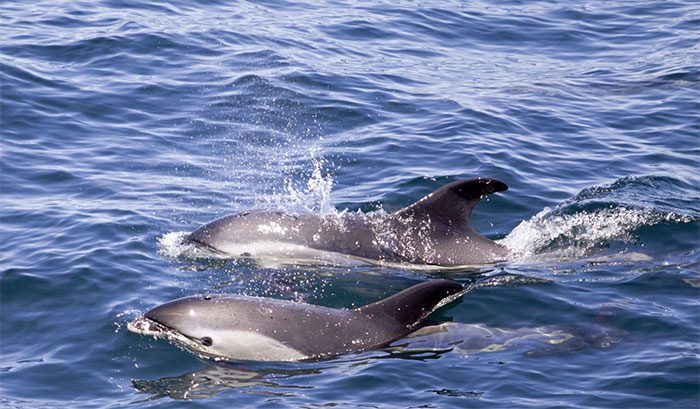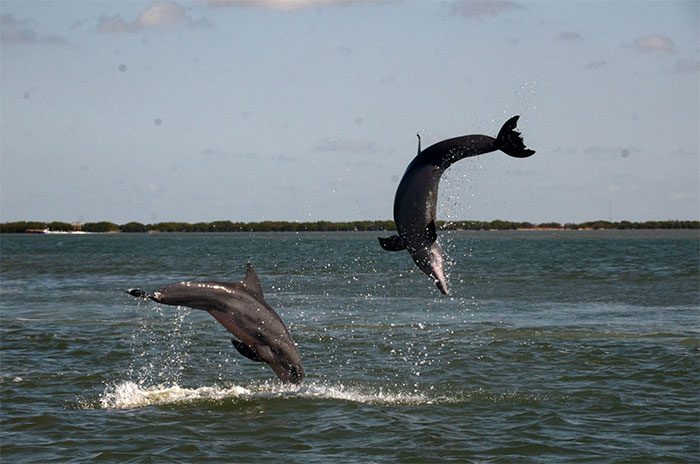Scientists have long known that dolphins recognize their peers through whistles, and each species produces whistles at different sound frequencies.
Recently, researchers discovered that bottlenose dolphins not only demonstrate the ability to recognize their peers through sound but also recreate this recognition using another sense: taste.
Identifying Peers Through Two Senses
The researchers found that dolphins perform this type of identification by detecting urine while scientists were investigating whether animals actually call each other by their whistles.

Dolphins are capable of social recognition through taste.
The scientists conducted a study known as a multimodal study, which tested whether an animal could recognize an object or another animal through multiple signals received from different senses.
Previous experiments of this kind have been conducted on various animal species, including fish and monkeys. However, communication systems in most animal species lack distinctive sounds that can be recognized as belonging to their peers, such as the whistles characteristic of dolphins, researchers noted.
The lead author of the study, Jason Bruck, a biologist at Stephen F. Austin State University in Texas, stated that dolphins retain and sample urine from familiar individuals longer than from unfamiliar ones. This is significant because dolphins are the first vertebrates proven to have the ability to recognize their peers solely through taste.
Identifying Peers with “Super Sharp” Taste
The researchers discovered that dolphins spend three times as long sampling urine from unfamiliar dolphins compared to familiar ones. This indicates that animals can identify known peers through taste.
To test the persistence of recognition through the senses, the researchers paired urine samples with recordings of characteristic whistles played through sound in the water, corresponding to the same dolphin that provided the urine sample or a mismatched sample.
When hearing the matching whistle, dolphins began to approach to see if the urine sample matched in order to recognize their peers. This suggests that animals recognized consistency in the signals perceived through two senses—taste and hearing.
These findings imply that for dolphins, both the whistle and the smell of urine serve as indicators of identification among their peers.

For dolphins, the whistle and the smell of urine serve as identification traits.
Implications for Obesity in Humans
Future studies may investigate the mechanisms behind this newly discovered ability of dolphins, Bruck noted.
The research team also suggested that fats are related to dolphins’ ability to taste urine. With the recognition skills revealed, they believe dolphins may also extract other information from urine, such as reproductive status or use pheromones to influence each other’s behavior.
This study also presents another surprising breakthrough regarding its implications for human obesity, as similar genes that allow dolphins to identify lipids in urine are present in humans, helping individuals recognize when they have consumed enough fat. Therefore, studying dolphin genes could enhance understanding of how this works in humans.
Additionally, this work may have other implications, helping us realize that human-caused ocean pollution, such as oil spills or chemical runoff, could hinder dolphins’ signaling abilities, potentially causing more harm than previously thought.





















































